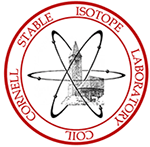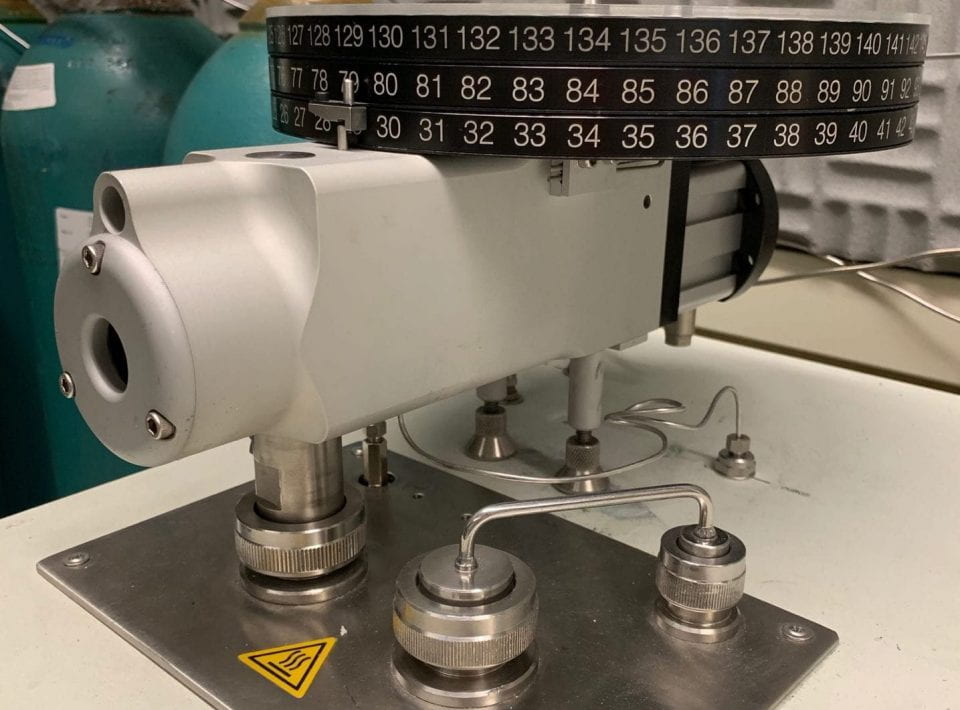Solid sample preparation is an essential step in determining the isotopic and elemental composition for both carbon and nitrogen analysis. This process involves three major steps: drying, grinding, and weighing. Each step must be performed with caution to insure that the samples are not contaminated. COIL has both a natural abundance and enriched prep laboratory, which can meet your specific sample needs. The utmost care is taken to make sure that natural abundance samples are kept separate from enriched or labeled samples. Each prep laboratory houses a freeze-dryer and condenser, drying oven, freezer mill, and microbalances. Below are some suggestions for sample preparation procedures and a listing of our specific equipment for preparatory needs. If you have any questions please contact the facility personnel.
I. Acceptable Homogeneity: Homogeneity is defined as a substance of uniform structure or composition throughout the entire sample matrix. Three things to consider when processing samples for uniform composition are sample particle size, texture and purity. There are many effective ways to grind samples including the use of a Wiley mill, freezer mill, roller grinder, and the standard mortar and pestle. Both the enriched and natural abundance prep laboratories contain a Spex CertiPrep 6750 Freezer/Mill for grinding purposes.
II. Weight: Sample weight is relative to the type of sample that is being analyzed. Some typical weights are 3 mg for plant leaf samples, 1 mg for animal samples, 6 mg for root samples, and anywhere from 10-70 mg for soil and sediment samples. Soil and sediment sample weights are dependant upon whether the sample is more organic or mineral based. A Sartorius MC5 microbalance is available for weighing natural abundance samples. COIL weighs all carbon and nitrogen samples into tin capsules. The tin is essential for proper combustion in the elemental analyzer. For hydrogen and oxygen samples COIL uses thin-walled silver capsules. Please contact the facility personnel for more information.
III. Shape: Both isotope ratio mass spectrometers utilize pneumatic type autosamplers. This pneumatic auto-sampler is designed for high sample throughput, but at a cost. The sample carousels can only hold samples of a certain size; therefore it is necessary that each and every sample is carefully prepared, rolled and shaped into a ball that will not get caught as the sample is being injected into the combustion column on the elemental analyzer. Flat or misshaped samples can get caught in the auto sampler!!! Also note that samples weighing more than 70 mg generally have combustion problems due to their large size.
IV. Pre-weighed vs. Ground: Whether you are sending pre-weighed samples or unprocessed samples for lab preparation, please remember that the general rule of thumb is to send three times as much as you need analyzed for reruns. With pre-weighed samples it is always safe to send duplicates unless it is impossible to do so. This ensures that if there is a problem due to instrumentation or simple external factors (i.e. breaking of sample vials during shipping) there will be extra sample to keep sample turnaround on schedule.
Quality Control
All analyses performed for elemental and isotopic analysis of carbon and nitrogen are conducted using two different quality control standards. The first standard is a pure chemical that is used to test the instrument linearity and define instrument response for the determination of elemental composition. Methionine (an amino acid) is typically the chemical standard used for this purpose. For each run, the effect of signal on isotopic measurement (linearity) is checked from 50 to 150 ug for nitrogen and 200 to 600 ug for carbon. The second standard is used to show measurement stability over the length of the run. This in-house standard is chosen to loosely resemble the matrix of the samples being analyzed. Some common examples of in-house standards include KCRN (a plant standard), CBT (an animal standard), RICE (a plant standard), Deer (an animal standard), and GNPS (a sediment standard). The facility does use other in-house standards, but this list composes the most commonly used for EA analysis. These standards are run once every ten samples to identify measurement variability or long-term drift. All in-house standards are calibrated periodically against international standards to verify accuracy. Within run isotopic precision for QC standards is 0.2 per mil for nitrogen and carbon.

